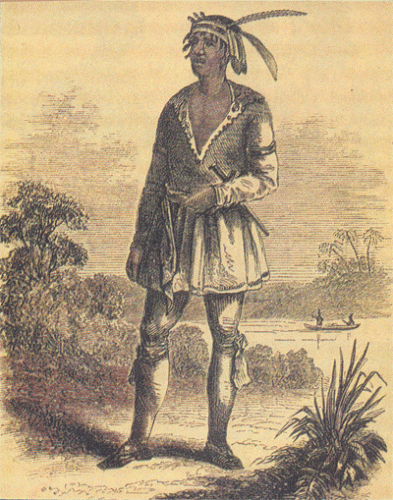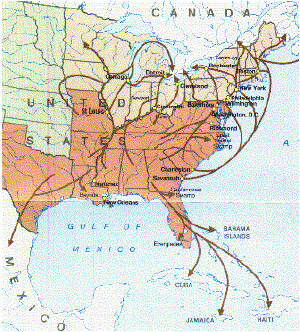Henrique Dias(1605-1662)
(Again you have to connect the dots)
NEGRO SLAVES, as military leaders, have played an important part in the present political alignment of the New World. Toussaint L’Ouverture and Dessalines
weakened the power of France in the Caribbean, and thereby brought about the sale of the Mississippi Valley to the United States; Vicente Guerrero
drove the Spaniards from Mexico and his antislavery policy caused Texas to enter the American Union; and Henrique Dias
broke the power of the Dutch in South America, thus making easier
the rise of the English-speaking peoples in North America.
Dias lived nearly a century and a half before Toussaint L’Ouverture. Though Toussaint probably never heard of him, the great Haitian could well have used him as a model. Also born a slave and of unmixed Negro parentage, Dias, without military training and almost illiterate,
defeated two of Holland’s ablest generals trained in the best schools of Europe. One of these was the celebrated Count Maurice of Nassau, brother of Frederick Henry, King of Holland.
Dias was born at Pernambuco, Brazil. Holland was then the World’s leading power. With mastery of the seas, she was crowding out Portugal, her leading rival, from the markets of the world. She had a monopoly on all the trade in the region south of the Tropic of Cancer, that is, Central and South America, Africa, India, the Philippines, and Australia. The English tried to capture some of this trade, but the Dutch defeated them in several battles, even sailing up the Thames and burning shipping.
The Dutch, having secured a foothold in North America in what is now the state of New York, decided to gain another in South America. Selecting Brazil, which had been Portugal’s for more than a century, they landed there with a powerful force under Count Maurice and easily defeated the Portuguese. At Porto Calvo Count Maurice defeated Count de Bonjola, Portuguese commander, and made himself master of all northern Brazil. Portugal dispatched a powerful fleet with a large army to Brazil, but on the voyage across, the plague killed more than 3000 soldiers. The remainder were forced to land in Africa, where still more died. When the expedition arrived in Brazil it was easily beaten by the Dutch. Of the ninety-three ships that started from Portugal only two ever returned. “These victories,” say D’Urban and Mielle, “so inflated the courage of Count Maurice that he began to regard Brazil as a theatre too small for the exercise of his valor.”
The Brazilians, now forced to live under Dutch rule, longed for freedom, and revolted under two of their leaders, Vieyra and Negreiros, but their scanty forces were easily beaten by Count Maurice in every fight. It was at this seemingly hopeless juncture that Dias entered the fight as a leader. Hitherto he had been only a common soldier.
As such he had distinguished himself, however. At Iguarussa early in the struggle, with only thirty-five other black men, he had turned the tide of battle in favor of the Portuguese.
In I635 he had been among the prisoners captured by the Dutch at Fort Buen Jesus, but the Dutch, taking him for a slave of one of the white prisoners, had guarded him loosely and he had escaped. Rejoining the Portuguese, he had again distinguished himself at Porto Calvo, June 9, 1639. In this battle, in which the Portuguese were surrounded by the Dutch, Dias, with only eighty black men, fought his way to liberty through the ranks of the enemy. When the Dutch had captured all of northern Brazil, Dias went south where the Portuguese were still resisting and offered his services to the governor, Mathias de Albuquerque. While here, he saw that the Indians were fighting under their own leader. Why, he asked, should not the blacks do likewise?
He suggested this idea to the governor, who gave him permission to raise a corps of slaves and free Negroes. Enlisting 500 of them, he trained them thoroughly and went off to meet the hitherto victorious Count Maurice. At Arecise he defeated him with great loss. In ten successive battles he repeated this success, inspiring all, white and black, by his example. King Philip IV of Portugal, in recognition of these services, placed him over all the other black men and mulattoes in the colony, and gave him the highest decoration, the Order of Christ, together with a salary sufficient to maintain his rank. Count Maurice was recalled and the leading Dutch commander of that period, Count Sigismond, took his place. Portugal, at the same time, sent out her ablest general, Baretto de Menenes, with a large fleet, but this, like the other, also met disaster. The Dutch destroyed it and captured Menenes.
Count Sigismond, with a greatly strengthened force, assailed Pernambuco and captured it after defeating all the Portuguese leaders, including Dias. Once again, however, Dias rallied the black men, and meeting Count Sigismond in one of the most stubborn engagements of that war of twelve years, defeated him. With his seasoned European troops, Count Sigismond attacked Dias twice with impetuosity and twice Dias beat him off with incredible valor. Dias now besieged the Dutch general in Pernambuco. Sigismond made a sortie, hoping to surprise him, but the latter, ever vigilant, made a counterattack and pursued the Hollanders to the gates of the town, killing nearly all of them.
Dias’ greatest exploit was the capture of Cinco Pontus. This was an apparently impregnable fortress near Pernambuco, which commanded the whole city and neighborhood. It was well provisioned and garrisoned by an army of 50o0 men, and protected by high, massive walls and deep and wide ditches with twelve feet of water. As provisions were supplied by the Dutch ships, it was impossible to reduce the fort by famine. Each attack upon it was immediately punished by a bombardment of the town and the surrounding Brazilian territory. Dias decided to capture this fortress and sent his plan of attack to the commander-in-chief, who thought so well of it that he gave Dias a free hand. ” Tomorrow,” assured Dias, “you shall see our flag waving OVer the fortress of Cinco Pontus.”
Bidding his men take only’ their knives and pistols and a tightly-bound bundle of wood each, he left for thc fort at two o’clock in the morning. In the dark the}’ arrived at their destina. tion undisturbed. Silently’ and rapidly’ they threw the wood in to the deep trench, making an easy passage over the water, then with this same wood piled against the wall, they climbed over easily into the fort, Dias leading. The garrison was asleep. Before it could be excited Dias had gained the greater part of the fortress.
The Dutch, rallying, resisted desperately. Dias received a wound, which shattered the bones of his left arm above the wrist. Learning that it would take some time to adjust the bones and arrange the dressing, he bade the surgeon cut off the hand. “It is of less consequence to me than a few moments’ time just now,” he said, laughing grimly. “The five fingers on this other hand will be worth that many hands.” This done, he rushed into the thickest of the fight, and although the Dutch had the advantage of artillery and rifles, he defeated them, capturing the garrison with its stores of provisions and ammunition. When the smoke cleared the Portuguese flag was floating over the battlements, as Dias had promised. Menenes, the commander-in-chief, could hardly believe the good news. Seeking out Dias, who was lying on a camp bed weak from loss of blood, he overwhelmed him with praise. Dias was taken to Portugal at the command of King John IV, who received him with great distinction and bade him ask for anything he wished. Dias, thinking of his men first, asked that the regiment be perpetuated and that pensions be given his soldiers. Later a town called Estancia was built near Pernambuco for them at the king’s orders. In addition, hc raised Dias to the nobility and struck a medal depicting the capture of the fortress in his honor.
Driven out of Pernambuco, the Dutch finally yielded, with peace restored, Dias, who was as modest as he was brave, kept in the background. Others pushed themselves forward and he and his brave men were soon forgotten. Worse, Brazil, impoverished by’ the long war, reduced them to slavery’ again on an even more oppressive scale. The Indians, who had also played a very important role in victory, were treated even worse and were once again raided by slave hunters.
Dias lived seventeen years longer and died in neglect and poverty at Pernambuco June 8, 1662. His memory, however, was perpetuated in a regiment composed entirely of Negroes, which lasted until the Brazilian Civil War of 1835. It was commanded by the descendants of Dias and up to that time did not “ally itself with the whites, wishing thus to perpetuate the memory of a race which is honored in the colony.”
French, Spanish, and Portuguese encyclopedias speak in highest terms of Dias. Pinheiro Chagas has written a short sketch of his life. Several Italian writers of the seventeenth century have also praised his bravery and his military skill, among them Brandano, who has devoted considerable space to him.


 brehs
brehs





